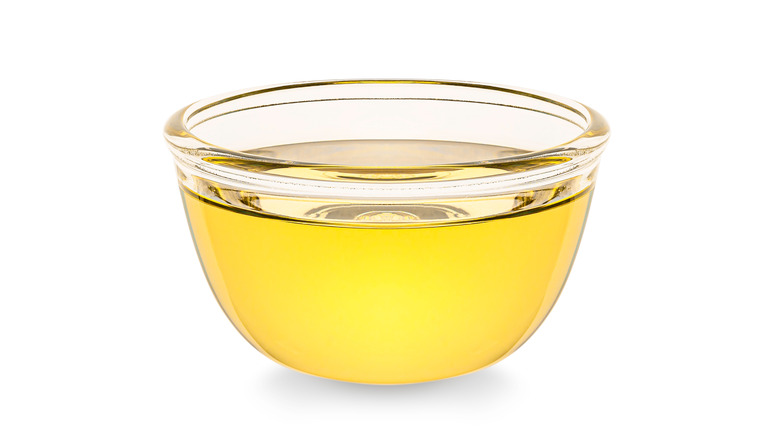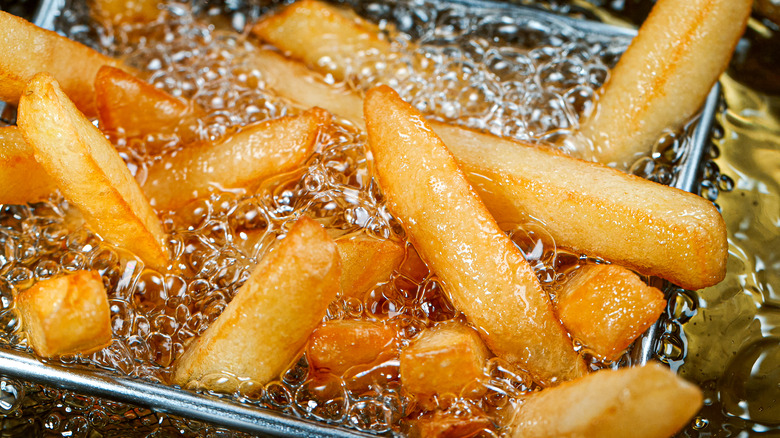What Makes Vegetable Oil Great For Frying
Chicken, mozzarella sticks, or green tomatoes — everything's better when it's fried. Maybe it's the crunch factor, or maybe the Maillard reaction, but regardless of the reason, it's safe to say that we have an affinity for all things fried. But did you know that one oil — vegetable oil — is actually the choice frying companion when it comes to your favorite fried dishes?
Healthline reports that fried foods are often higher in calories and trans fats, which means that regular consumption can lead to heart disease, diabetes, and obesity. While it's recommended to limit consumption when the cravings are too tempting to resist, make sure that you have vegetable oil on hand for all your frying needs.
A general term for oils made from seeds, nuts, or grains, Cook's Illustrated explains that most vegetable oils are made from soybeans or from a blend of canola, corn, and sunflower oils. Multipurpose (and super inexpensive), you can use it for vinaigrettes and baked goods, but the best application of vegetable oil is for frying.
A high smoke point and neutral flavors
Smoking point and flavor are the two most important factors to consider when it comes to picking the perfect oil for frying. According to The Pioneer Woman, vegetable oil has a high smoking point between 400˚F and 450˚F. This means that it can withstand the high temperatures needed when frying foods without starting to burn.
Additionally, unlike oil with high smoking points like peanut oil (that's a bit too nutty) or red palm oil (that's a bit too floral), Bon Appétit explains that vegetable oil has a neutral taste that won't impart much savor. So instead, frying with this oil will mean that foods will maintain their flavor.
Regardless of what you're frying, remember to keep vegetable oil in a cool place away from sunlight to prevent it from going rancid. Real Simple also suggests that the bottles be properly sealed to avoid spoilage, given that vegetable oil is susceptible to oxidation.

